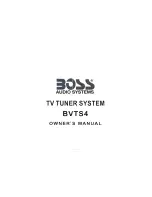
Service Modes, Error Codes, and Fault Finding
5.
•
The consumption of controller IC 7103 is around 19 mA
(that means almost 200 mV drop voltage across resistor
3108).
•
The current capability of DC-DC converters is quite high
(short-circuit current is 7 to 10 A).
•
The DETECT1 signal (active “low”) is an internal protection
(error 18) of the DC-DC convertor and will occur if the
output voltage of any DC-DC convertor is out of limits (10%
of the normal value).
Fault Finding
•
Symptom:
+1V2 not present (even for a short while ~10
ms)
–
Check 12 V availability (resistor 3108, MOS-FETs
7101 and 7102), value of +12 V, and surrounding
components)
–
Check the voltage on pin 9 (1.5 V),
–
Check for +1V2 output voltage short-circuit to GND that
can generate pulsed over-currents 7...10 A through coil
5103.
–
Check the over-current detection circuit (2106 or 3131
interrupted).
•
Symptom:
+1V2 present for about 100ms, +3V3 not rising.
–
Check the ENABLE-3V3 signal (active “low”),
–
Check the voltage on pin 8 (1.5 V),
–
Check the under-voltage detection circuit (the voltage
on collector of transistor 7105-1 should be less than
0.8 V),
–
Check for output voltages short-circuits to GND (+3V3)
that can generate pulsed over currents 7...10 A
through coil 5101,
–
Check the over-current detection circuit (2105 or 3127
interrupted).
•
Symptom:
+1V2 OK, +3V3 present for about 100 ms.
Possible cause:
SUPPLY-FAULT line stays “low” even
though the +3V3 and +1V2 is available - the stand-by
microprocessor is detecting that and switching “off” all
supply voltages.
–
Check the drop voltage across resistor 3108 (they
could be too high, meaning a defective controller IC or
MOS-FETs),
–
Check if the boost voltage on pin 4 of controller IC 7103
is less than 14 V (should be 19 V),
–
Check if +1V2 or +3V3 are higher than their normal
values - that can be due to defective DC feedback of
the respective DC-DC convertor (ex. 3152, 3144).
•
Symptom:
+1V2 and +3V3 show a high level of ripple
voltage (audible noise can come from the filtering coils
5101, 5103).
Possible cause:
instability of the frequency
and/or duty cycle of a DC-DC converter or stabiliser.
–
Check the resistor 3164, capacitors 2102 and 2103,
input and output decoupling capacitors.
–
Check AC feedback circuits (2120, 2129, 3141, 3153,
2110, 2114 and 3135).
•
Symptom:
+1V2, +3V3 ok, no +5V5-TUN (analogue sets
only).
Possible cause:
the “+5V5-TUN GENERATOR”
circuit (7202 and surroundings components) is defective:
check transistor 7202 (it has to have gate voltage pulses of
about 10 V amplitude and drain voltage pulses of about 35
V amplitude) and surrounding components. A high
consumption (more than 6 mA) from +5V5-TUN voltage
can cause also +5V5-TUN voltage to be too low or zero.
Note:
when a pair of power MOSFETs (7101 or 7102)
becomes defective, the controller IC 7103 should be replaced
as well.
5.8.5
Fan self test (only for sets with LED backlight)
In case fans are present, a softest can be done by pushing the
red coloured button on the remote control while the TV set is in
CSM. Exit CSM and check the status of the fans in the error
buffer by entering SAM ( info button on the RC). In
case of failure (fully red screen) more detailed information is
available in the error buffer (error 41, 42, 43, 44).
5.8.6
UART Logging
When something is wrong with the TV set (f.i.the set is
rebooting) checking the UART logging using hyperterminal can
be done to find more information. Hyperterminal is a standard
Windows application. It can be found via Programs,
Accessories, Communications, Hyperterminal. Connect a
“ComPair UART”-cable (3138 188 75051) from the Service
connector in the TV set,
via the ComPair interface (this is
compulsory, otherwise ICs are blown in the PC)
, to the
“COMx”-port of the PC. After start-up of Hyperterminal, fill in a
name (f.i. “logging”) in the “Connection Description” box, then
apply the following settings:
1.
COMx
2.
Bits per second = 115200
3.
Data bits = 8
4.
Parity = none
5.
Stop bits = 1
6.
Flow control = none
During the start-up of the TV set, the logging will be displayed.
This is also the case during rebooting of the TV set (the same
logging appears time after time). Also available in the logging
is the “Display Option Code” (useful when there is no picture),
look for item “DisplayRawNumber” in the beginning of the
logging.
Tip:
When there is no picture available during reboot, it is
possible to check for “error devices” in the logging (LAYER 2
error). This can be very helpful to determine the failure cause
of the reboot. For protection state, there is no logging.
5.8.7
Loudspeakers
Make sure that the volume is set to minimum during
disconnecting the speakers in the “on” state of the TV. The
audio amplifier can be damaged by disconnecting the speakers
during “on” state of the set! Sometimes the set can go into
protection, but that is not always the case.
5.8.8
Tuner
Attention: In case the tuner is replaced, always check the tuner
options!
5.8.9
Display option code
Attention: In case the SSB is replaced, always check the
display option code in SAM, even when picture is available.
Performance with the incorrect display option code can lead to
unwanted side-effects for certain conditions.
See also
5.8.10 Upgrade HDMI EDID NVM
To upgrade the HDMI EDID, see ComPair for further
instructions.
















































